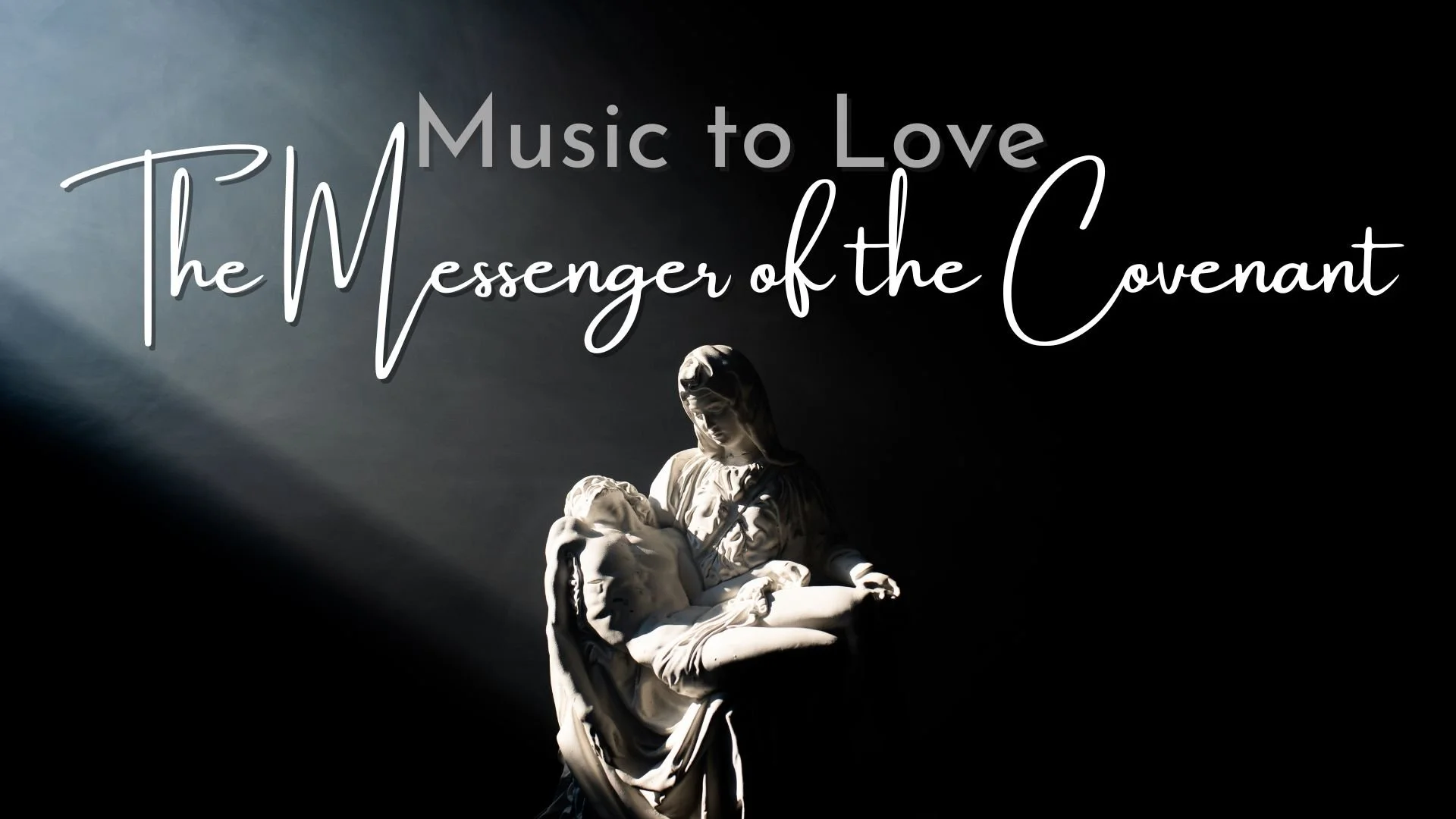Films to Love: Come to the Stables
At Christmas time, it’s a custom for many to break out the holiday films that have collected dust on our shelves throughout the year. For a lot of us, those Christmas classics are the same- such as It’s a Wonderful Life, A Christmas Carol, White Christmas, and National Lampoon’s Christmas Vacation. However, I have endeavored here at Whiskers on Kittens to highlight holiday films that are a bit off the beaten path.
In our family, we prefer older films. This is for several reasons. Chief amongst them is the moral foundation that undergirded the society during the time in which those films were made. While it is true that we are inclined to gild the past through the rose colored glasses of nostalgia, it is not a stretch to look at the the time of the Greatest Generation and conclude that the fabric of society provided the proper warp and weft for the finest of tapestries. This is why we like to watch classics.
This year, I’ve selected a movie that is actually newer in my collection, Come to the Stables. This movie beautifully depicts the finest aspects of the Greatest Generation. This story may not be the full faithful retelling of how St. Jude’s Children’s Hospital was born, but it does provide a great deal of food for thought, particularly at the Christmas season.
“O Come, All Ye Faithful
Joyful and Triumphant
O Come Ye, O Come Ye to Bethlehem”
It begins with two figures trudging through the snowy hills of Lancaster, Pennsylvania. The two figures stop at a crossroads. It is at this crossroads that we learn that they are two nuns recently arrived in America from World War II torn France.
They are seeking someone in particular, Amelia Potts, an artist known for her magnificent paintings of religious scenes from the Bible.
When they find Miss Potts, she is in the midst of a manger scene. Though surprised by the unexpected arrival of the sisters, she welcomes them in to her humble home and even offers them a place to stay.
It is here that Sister Margaret and Sister Scholastica explain their purpose in coming to Bethlehem, Pennsylvania from France. During the war, the sisters had run a children’s hospital. The Nazis had surrounded it and used it as a base to plan their attacks. With the approach of the US army, the sisters knew that the hospital was in direct line of fire. They removed as many of the children as they could to safety, but about a hundred children still remained in the building, too sick to be removed safely.
It was at this crucial point that Sister Margaret prayed. If the Lord would help her to get word to the American general of their plight, she would dedicated her life to returning to America and setting up a children’s hospital. The Lord was faithful. Word reached the American general in time, and while everything around the hospital received heavy artillery fire and was destroyed, the children’s hospital remained untouched.
“Come and Behold Him,
Born the King of angels.
O Come, Let Us Adore Him
O Come, Let Us Adore Him
O Come, Let Us Adore Him
Christ the Lord!”
With the conclusion of the war, these two sisters sought guidance on where the Lord wanted them to build their hospital. When a Christmas card arrived with a Biblical painting by Miss Amelia Potts, the sisters knew the Lord was leading. On the back of the card there was a bio of Miss Potts that revealed the artist lives in Bethlehem, Pennsylvania. With nothing other than the promoting of Providence, the sisters set out to find Miss Potts. They knew that once they arrived in Bethlehem, PA, they would know their next steps.
“God from true God, and
Light from Light eternal,
Born of a virgin, to earth He comes!”
The sisters have no money. No prospect of getting money. They have no land nor any prospect of acquiring some. But they have the unshakeable faith of two women who have heard from God. Armed with that potent weapon, they begin their quest to fulfill their promise.
The morning after they arrive in Bethlehem, they rise early and go out to find the place where they will build their hospital. In true Providential fashion, they light upon the place across from Amelia Potts’ stable studio.
While out surveying the land, they meet composer Bob Masen, Amelia Potts landlord and neighbor. While not a religious man by any stretch, Bob Masen is friendly and respectful of the sisters. When they ask him who owns the land they want, he tells them it belongs to Luigi Rossi.
Armed with this knowledge, the sisters go and visit the Bishop and tell him of their quest. When informed that they have no monies, he makes it clear that he cannot help them financially. When he asked them what land they want, they tell him of the land owned by Luigi Rossi. Shocked by the revelation of who the owner is, the Bishop is further stupefied when the sisters tell him they believe that Mr. Rossi will donate the property. Almost in a Pontius Pilate gesture of washing his hands of them, the Bishop gives them $50 to aid them with daily provisions and lodging and wishes them well on their way.
“Only-begotten Son of God the Father:
O Come, Let Us Adore Him
O Come, Let Us Adore Him,
O Come, Let Us Adore Him,
Chirst the Lord!”
Unmoved by the insurmountable obstacles before them, the sisters return to Miss Potts stable and tell her all they have learned. When they mention Luigi Rossi, Miss Potts registers the same shock that the Bishop did. When the sisters ask her where they could find him, she says in New York City.
The next morning, they arrive at Bob Masen’s house to request the use of his jeep, which he had offered to them the day before. When they tell him that they are traveling to NYC to meet with Luigi Rossi, he too is surprised. His jack of all trades/porter Anthony James tells the sisters they don’t need to know Rossi’s address; they just need to ask any policeman in NYC where he is and they will tell them.
When they arrive in NYC, they go first to St. Patrick’s Cathedral to pray and light a candle. Then, as suggested by Anthony James, they get directions to Rossi’s place of business from an officer.
It is very clear the moment that the sisters arrive on Rossi’s premises that the man is a godfather/Al Capone type. This does not dissuade the sisters. Another example of Providence in their journey, the sisters make it past Rossi’s bodyguards and gain a meeting with the don.
While Rossi may be steeped in illicit activity, his still devout Catholic; therefore, he listens with respect to the sisters tale. When they request that he donate the land that he owns, he tells them he can’t do it. He has plans for that land to be his hideaway when he is forced to retire.
Though disappointed, the sisters tell him that they understand. Just as they are leaving, Sister Margaret remarks upon the photo of a young man in uniform on Rossi’s desk. She asks him if it is his son.
With heartbreaking pride, Rossi says it is. Just as the sisters are walking out the door, Sister Margaret again stops and asked Rossi if his son came back from the war. Rossi says he died in Rouen. The sisters say they will pray for him and leave. It is in this moment that Rossi changes his mind. He tells the sisters that he will donate the land to them if they will place a stained glass window in remembrance to his son in the building.
“Sing Choirs of Angels
Sing in Exultation
Sing, all ye citizen of heaven above!
Glory to God, all glory in the highest:
O Come, Let Us Adore Him”
The sisters return to Bethlehem triumphant, knowing with certainty that their steps are indeed orders of the Lord. So, when they are faced with the need to have a building from which to stage their operation, they are not daunted.
With the arrival of the other sisters and a priest from France who they sent for when they arrived in Bethlehem, Sister Margaret and Sister Scholastica have a fire ignited within them. They know that Providence has brought them here and has guided they every step. So, when they need the money to procure a specific building that they need to start their hospital, they have every confidence that the Lord will provide for them.
They contract with a realtor for three months allowance to raise $5,000 for a downpayment on an old witch hazel factory building. By the last week of the three months, the sisters have raised $2,500. They only need $500 more to secure their mortgage.
It is at this time that Bob Masen, who has been away in Hollywood for several months working, returns. Not only is he furious to learn that the sisters intend to build a hospital across the street from his idyllic home, he’s taken aback by the momentum and progress that the sisters have made.
He expresses sadness at having to stand against their purpose, but he makes it clear to them that he will do whatever he can to stop them from building a hospital on his doorstep.
Masen goes to the realtor and asks him how close the sisters are to achieving their goal. The realtor assures him that he doesn’t see any way in which they can raise the funds they need within the allotted time. This eases Masen’s mind; he even makes a bid on the very building that they are trying to buy so that the agreement can’t be extended as there will be another buyer.
“Yea, Lord, we greet thee,
Born this happy morning;
Jesus, to thee be all glory giv’n!
Word of the Father, now in flesh appearing:
O Come, Let Us Adore Him
O Come, Let Us Adore Him
O Come, Let Us Adore Him
Christ the Lord!”
It is at this juncture that a series of events and revelation occur. In the interest of letting something surprise you when you watch the film, I will not tell you what those events and revelations are. However, you will see here why Come to the Stables is a perfect Christmas movie. It has the fingerprints of Providence all throughout the journey. Why does that make it a Christmas movie? Because it is a small picture of the Christmas story. For was it not the fingerprints of Providence found all throughout the annals of human history that came to fruition on that first Christmas night?
The sisters journey from the war torn landscape of France to the idyllic setting of Bethlehem, PA required supreme faith, unshakeable regardless of what it encountered. And while we look at this story and find that faith remarkable, I find myself thinking about how their faith had to be exercised in order to live through a World War. When faith is stretched in such dire circumstances, then believing God to provided food, shelter, land, and provision is small potatoes in comparison.
More so, however, their journey was an act of worship and adoration. Nothing they achieved had anything to do with their egos. Their continued humility and gratitude for the ordering of their steps and the fingerprints of Providence in all is the physical manifestation of O Come, Let Us Adore Him. All their work, all their sacrifice was born out of a heart brimming with love for their Savior. And, out of that love, Jesus was revealed. There can be no more perfect Christmas film than one that reveals the true reason for the season.
It is not my custom to tell the whole story of a movie. I did so with Come to the Stables because not only is it a story worth the telling, but because even with the retelling, it cannot convey the impact of watching the movie. Truly, you will gain so much from the watching.
Merry Christmas, dear readers.










































